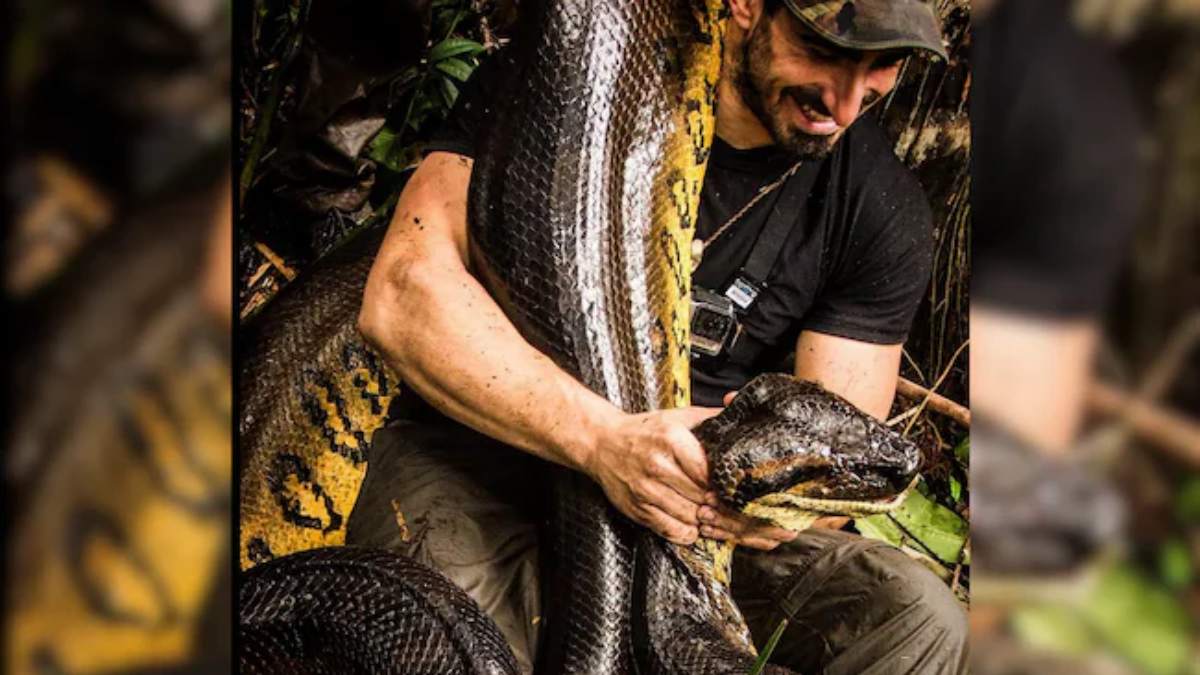Paul Rosolie, a prominent American conservationist, author, and filmmaker, is renowned for his unwavering commitment to wildlife preservation and environmental conservation, particularly in the dense and perilous jungles of the Amazon.
His endeavors shed light on the urgent need to safeguard some of the planet’s most biodiverse and endangered ecosystems. However, he once undertook a daring stunt—agreeing to be swallowed alive by an anaconda.
Despite his initial determination, the stunt quickly took a perilous turn when the anaconda began consuming his head. Within minutes, Rosolie called for the stunt to be terminated. Recounting the harrowing experience that occurred in 2014, his narrative recently gained widespread attention.
Describing the ordeal, Rosolie recounted, ‘The last thing I remember was her mouth open wide and everything went black. I went limp and let it constrict.’ He detailed the sensation of his suit cracking and his arms being torn from their sockets as the anaconda coiled around him, bringing him perilously close to a ruptured rib cage.
Also Read: WATCH: UP Policeman Performs Lifesaving 45-Minute CPR On Unconscious Monkey
Reflecting on the stunt’s purpose, Rosolie emphasized its aim of showcasing the formidable power of these snakes while advocating for the protection of their natural habitats. Anacondas, a group of large boas indigenous to tropical South America, employ constriction as their method of prey capture.
Rosolie further elucidated the suffocating terror he experienced during the stunt, describing the relentless pressure of the snake’s coils as he struggled to breathe. Notably, he highlighted the inexorable nature of the constrictive process, where each exhalation diminishes available space, leaving no room for subsequent inhalation—a sensation compounded by his inability to call for help.
Also Read: ‘300 Words Essay Ready’, Viral Video Shows Content Creator Driving Car At 103 Km/H
According to National Geographic, the green anaconda holds the distinction of being the largest snake globally in terms of both length and weight, with specimens reaching lengths of up to nine meters and weighing as much as 227 kilograms.













